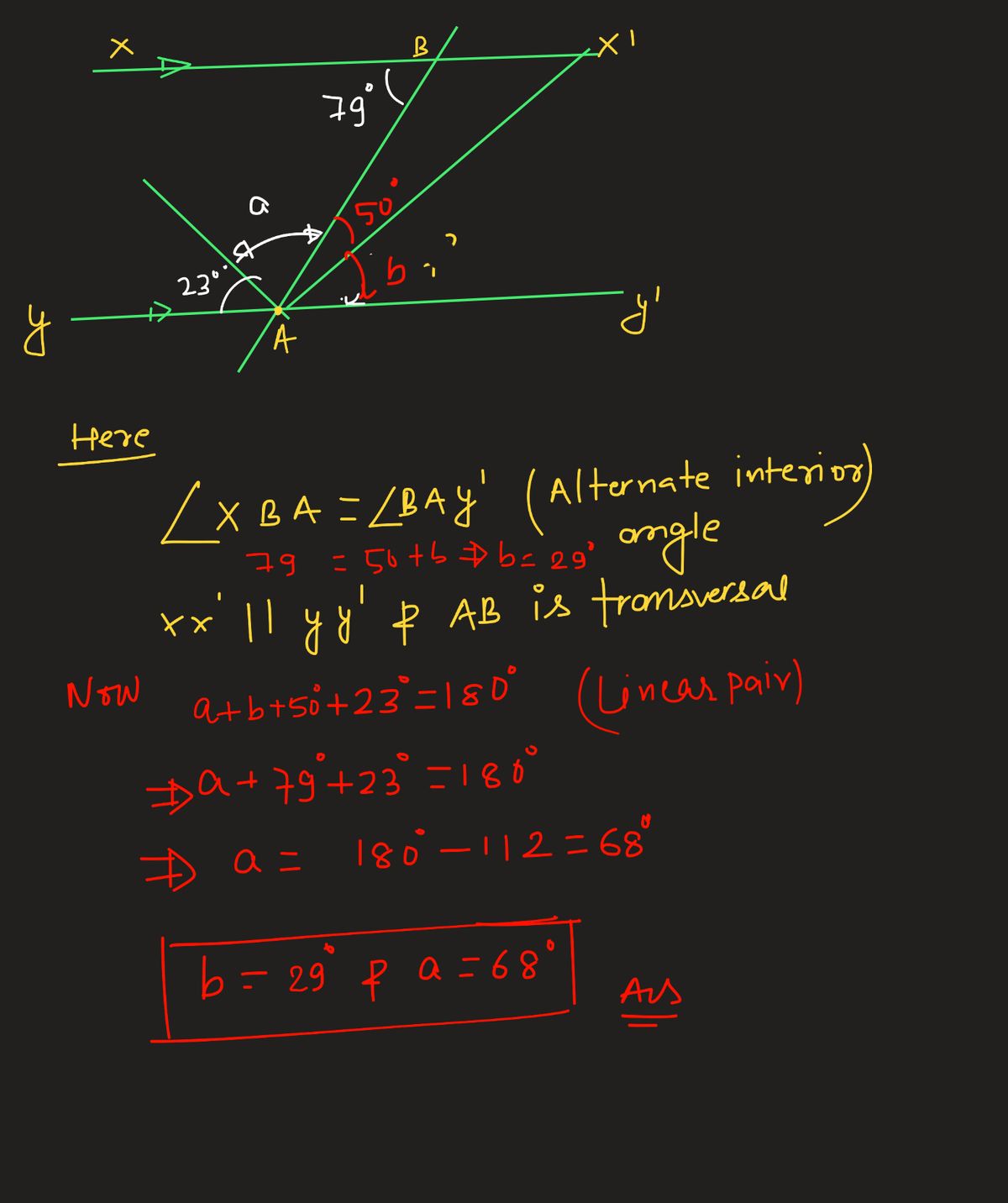Elementary Geometry For College Students, 7e
7th Edition
ISBN:9781337614085
Author:Alexander, Daniel C.; Koeberlein, Geralyn M.
Publisher:Alexander, Daniel C.; Koeberlein, Geralyn M.
ChapterP: Preliminary Concepts
SectionP.CT: Test
Problem 1CT
Related questions
Question
How do I do this?

Transcribed Image Text:The image displays a geometric diagram consisting of intersecting lines and angles. Here's a detailed description suitable for an educational website:
---
**Diagram Explanation:**
The diagram presents two main intersecting lines, forming several angles at the point of intersection. Here are the key features:
1. **Intersecting Lines:**
- Two horizontal lines intersect a diagonal line, forming multiple angles.
2. **Labeled Angles:**
- Several angles are clearly marked:
- One angle is labeled as 23°.
- Another angle is labeled as 79°.
- A circle indicates an angle labeled 100°.
- Two unknown angles are marked as \( a \) and \( b \).
3. **Annotations:**
- The values for angles \( a \) and \( b \) are provided:
- \( a = 78^\circ \)
- \( b = 29^\circ \)
4. **Mathematical Notations:**
- The angles are marked with standard circle arc symbols and their values are written adjacent to them.
**Note:**
- This diagram can be used to explore the properties of intersecting lines, such as vertical angles being equal and the sum of angles around a point being 360°.
**Page Context:**
- There are faint mathematical calculations written around the diagram, possibly related to solving for unknown angle values.
- The page is numbered "134," which could be part of a larger text or workbook.
---
This description is designed to help students understand the geometric properties demonstrated in the diagram.
Expert Solution
Step 1

Trending now
This is a popular solution!
Step by step
Solved in 2 steps with 1 images

Recommended textbooks for you

Elementary Geometry For College Students, 7e
Geometry
ISBN:
9781337614085
Author:
Alexander, Daniel C.; Koeberlein, Geralyn M.
Publisher:
Cengage,

Elementary Geometry for College Students
Geometry
ISBN:
9781285195698
Author:
Daniel C. Alexander, Geralyn M. Koeberlein
Publisher:
Cengage Learning

Elementary Geometry For College Students, 7e
Geometry
ISBN:
9781337614085
Author:
Alexander, Daniel C.; Koeberlein, Geralyn M.
Publisher:
Cengage,

Elementary Geometry for College Students
Geometry
ISBN:
9781285195698
Author:
Daniel C. Alexander, Geralyn M. Koeberlein
Publisher:
Cengage Learning